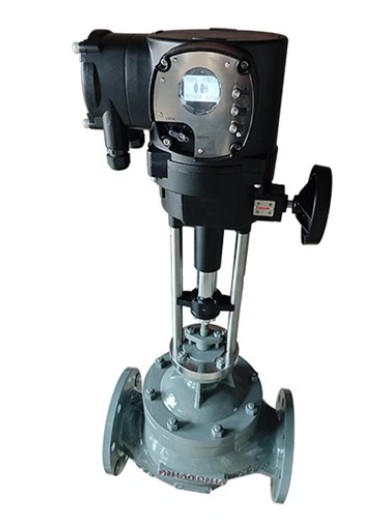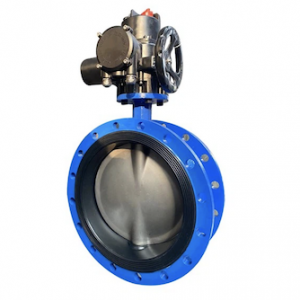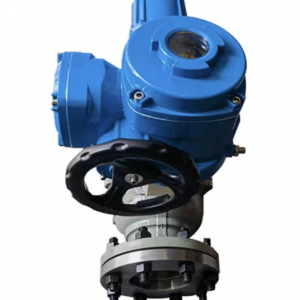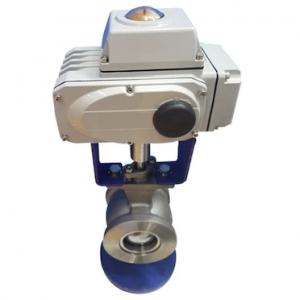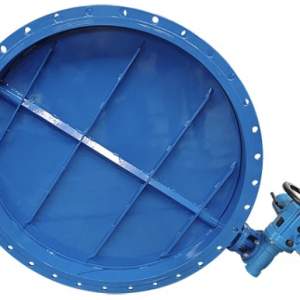Description
Automatic Positioner Electric Actuator Control valves are important actuator instruments in industrial automation process control. With the increasing degree of automation in the industrial field, they are being used more and more in various industrial production fields. Compared with traditional pneumatic control valves, electric control valves have obvious advantages: electric control valves are energy-saving (only consume electricity when working), environmentally friendly (no carbon emissions), and quick and easy to install (no complex pneumatic pipelines and air pump workstations are required). Valves are divided into three types according to the power used by the actuators they are equipped with, their functions and characteristics: linear characteristics, equal percentage characteristics and parabolic characteristics.
1. The control valve is simple to control and intrinsically safe. No additional explosion-proof measures are required.
2. The servo amplifier adopts deep dynamic negative feedback, which can improve the accuracy of automatic adjustment.
3. The fluid acts on the valve core in all directions, so the valve can work stably.
4. All movable surfaces use high-quality bearings with low friction, long life and no noise.
5. The control valve has superb technology, superior structure, smooth flow, quick response, and can replace imported goods.
6. The pressure drop loss of the regulating valve is small, the output force is stable, the flow coefficient is large, and the smooth cross-sections of the channels are equal.
7. The control valve adopts a pressure balance mechanism inside the valve, which makes the control valve responsive, precise in control, and allows a large pressure difference.
8. The control valve body is designed according to the principle of fluid mechanics with a low-flow resistance passage of equal cross-section, and the rated flow coefficient is increased by 30%.
9. The control valve has the characteristics of small size, light weight, easy to use, large flow, energy saving, and high adjustment accuracy.
Main Parts
Parts materials: Valve body
Valve bonnet
Packing gland
Valve stem
Valve disc
Seal ring
Indicator
Valve stem nut
Nut sleeve
Material: Gray cast iron
Cast steel
Stainless steel
Brass
Material: WCB, CF8 (304), CF3 (304L), CF3M (316L)
Nominal diameter: DN50~DN350
Nominal pressure: PN1.6~25MPa
Applicable temperature: -46C~ 500℃
Drive mode: Electric
Flow characteristics
It is the relationship between the relative flow rate of the medium flowing through the electric control valve and its opening under the condition that the pressure difference between the two ends of the valve remains constant.
There are three types of characteristics: linear, equal percentage and parabolic.
Working Principle
Working power supply: DC24V, AC220V, AC380V and other voltage levels.
Input control signal: DC4-20MA or DC1-5V. Feedback control signal: DC4-20MA (load resistance below 500 ohms) By receiving the signal of the industrial automation control system (such as: 4~20mA) to drive the valve to change the cross-sectional area between the valve core and the valve seat to control the flow, temperature, pressure and other process parameters of the pipeline medium. Realize the automatic adjustment function. The new electric control valve actuator contains a servo function, accepts a unified 4-20mA or 1-5V·DC standard signal, converts the current signal into a corresponding linear displacement, and automatically controls the opening of the control valve to achieve continuous adjustment of the process parameters such as pressure, flow, temperature, and liquid level of the fluid in the pipeline.
Installation
The electric control valve is best installed with the upper end of the working piston at the bottom of the horizontal pipeline. The temperature sensor can be installed in any position, and the entire length must be immersed in the controlled medium.
Electric control valves generally include a driver, which receives driver signals (0-10V or 4-20MA) to control the valve for adjustment. It can also form an intelligent network control system according to control needs, optimize control and realize remote monitoring.
Electrical Principle
Action principle: Motor power supply 220VAC or 380VAC, control signal 4~20mA, there is a controller inside the valve, the controller converts the current signal into the quarter-turn signal of the stepper motor, the motor rotates, and the gear, lever, or gear plus lever drive the valve stem to operate, realizing linear or quater-turn
Feedback: The motor runs, through the gear operation, the three-connector sliding rheostat outputs the valve positioning signal, in addition, there are three-wire limit signals (fully open, fully closed. Common line)
